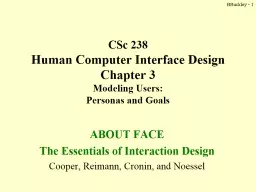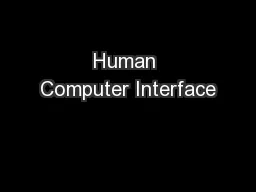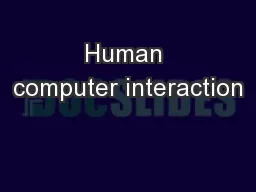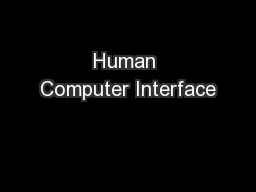PPT-BBuckley - 1 CSc 238 Human Computer Interface Design
Author : jane-oiler | Published Date : 2018-11-09
Chapter 3 Modeling Users Personas and Goals ABOUT FACE The Essentials of Interaction Design Cooper Reimann Cronin and Noessel Why Model to represent complex phenomena
Presentation Embed Code
Download Presentation
Download Presentation The PPT/PDF document "BBuckley - 1 CSc 238 Human Computer In..." is the property of its rightful owner. Permission is granted to download and print the materials on this website for personal, non-commercial use only, and to display it on your personal computer provided you do not modify the materials and that you retain all copyright notices contained in the materials. By downloading content from our website, you accept the terms of this agreement.
BBuckley - 1 CSc 238 Human Computer Interface Design: Transcript
Download Rules Of Document
"BBuckley - 1 CSc 238 Human Computer Interface Design"The content belongs to its owner. You may download and print it for personal use, without modification, and keep all copyright notices. By downloading, you agree to these terms.
Related Documents














